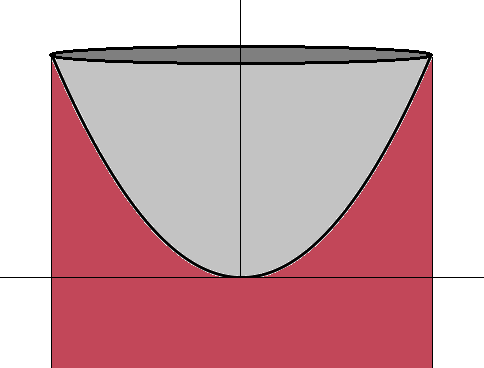Laser Pushing on Paraboloid
A cylindrical laser beam with total power and radius shines on the underside of a reflective paraboloid . The beam is parallel to the -axis, and the -axis passes through its center.
The upward force on the paraboloid due to the laser can be expressed as:
In the above equation, is the speed of light. What is the value of ?
Note: The intensity of the beam is uniform over its area

The answer is 0.8047.
This section requires Javascript.
You are seeing this because something didn't load right. We suggest you, (a) try
refreshing the page, (b) enabling javascript if it is disabled on your browser and,
finally, (c)
loading the
non-javascript version of this page
. We're sorry about the hassle.
The tangent to the parabola y = x 2 makes an angle θ with the x -axis at the point ( x , x 2 ) , where tan θ = 2 x . Thus the normal to the parabola at ( x , x 2 ) makes the same angle θ with the y -axis. Thus a photon of momentum p incident upon the paraboloid a distance x from the axis is reflected back at an angle 2 θ to its original direction. Thus the z -component of the change of momentum of that photon is p ( 1 + cos 2 θ ) = 2 p ( 1 − sin 2 θ ) = 4 x 2 + 1 2 p . Thus the z -component of the force on the paraboloid due to a laser beam of power P and radius r is F = ∫ 0 r c p P × π r 2 2 π x d x × 4 x 2 + 1 2 p = c r 2 4 P ∫ 0 r 4 x 2 + 1 x d x = 2 c r 2 P ln ( 4 r 2 + 1 ) With r = 1 we obtain α = 2 1 ln 5 .